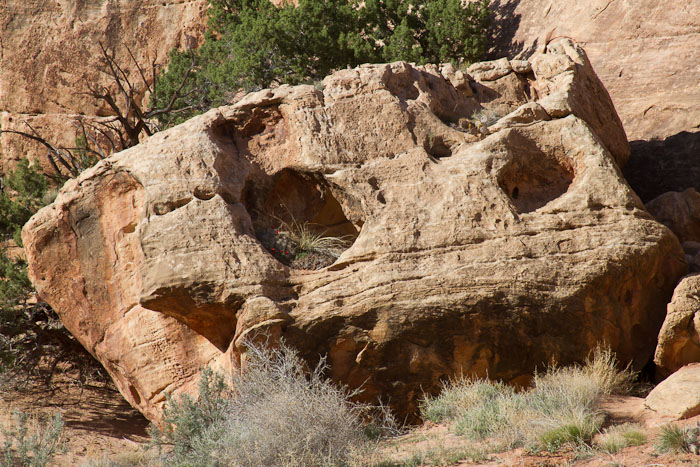Monday, April 25, 2011 - Devil's Canyon Campground, Blanding UT
< previous day | archives | next day >

Microclimate, White Canyon, Fry Canyon UT, April 22, 2011
Cactus in a hole
Clever cactus. Found a nice warm microclimate in a hole. Got a couple weeks head start on spring. Things might get a little tough later in the summer. Tradeoffs - it's all about tradeoffs.
Rain
It rained hard overnight. There is water in the crick. A couple feet of it. There won't be any exploratory hikes for a day or two. Ah well, I'm outa here - gotta go pick up my mail in Blanding.
Night camp
Site 7 - Devil's Canyon Campground, Blanding UT
- Verizon cell phone and EVDO service - good signal
- Go to Devil's Canyon Campground website
- Locate Devil's Canyon Campground on my Night Camps map
- Check the weather here
Words Get in the Way
Research shows that language suppresses visual memory, This is called verbal overshadowing and is a well-established phenomenon .... For example, in one study people watched a short videotape of a bank robbery, then spent twenty minutes doing something unrelated. Then one group spent five minutes writing down everything they could remember about the bank robber's face, while the other group did an unrelated task.
